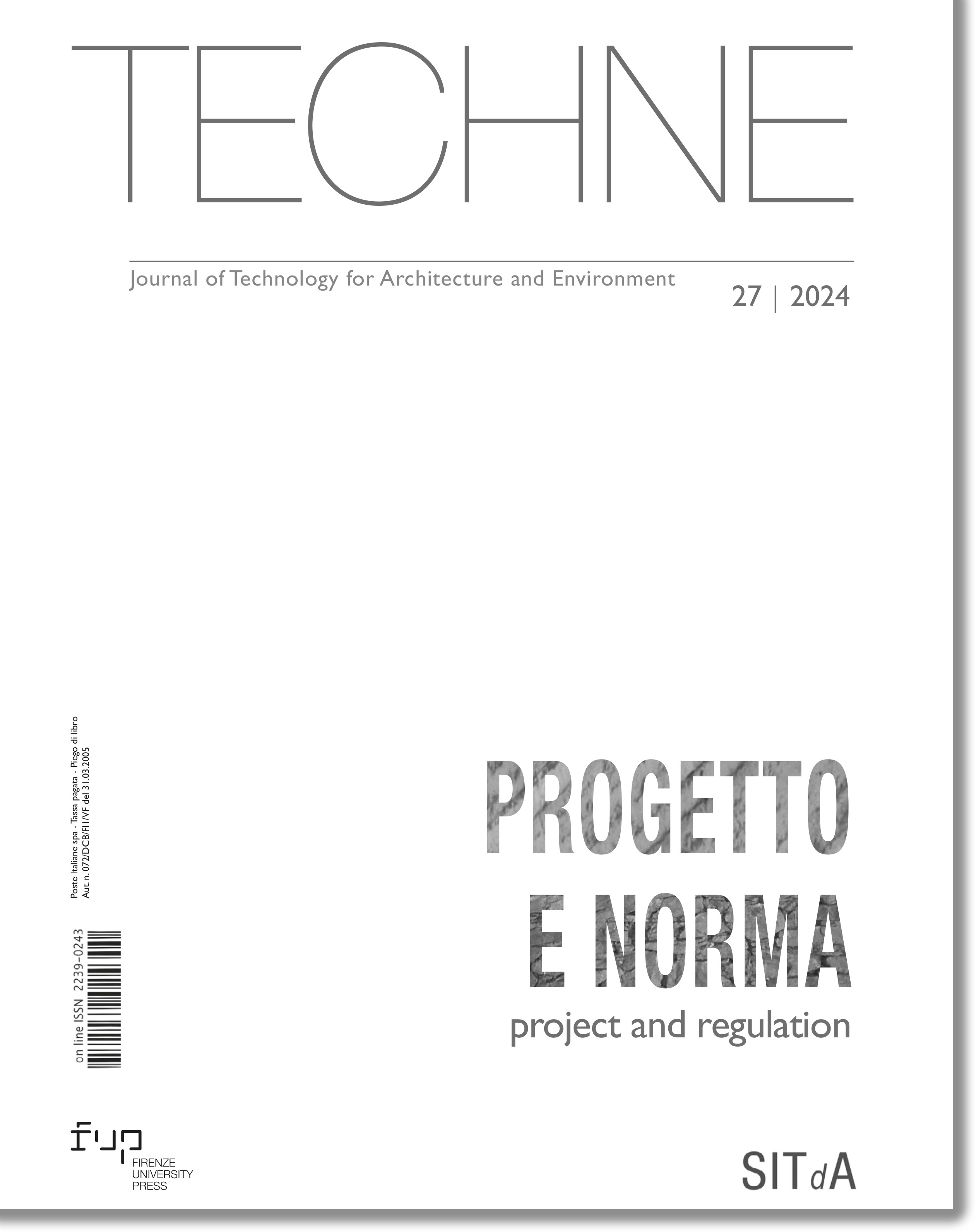Published 2024-06-10
Keywords
- Climate change,
- Wind-borne debris,
- Resilient building envelope,
- New regulation,
- Performance validation
How to Cite
Copyright (c) 2024 Martino Milardi, Mariateresa Mandaglio, Enrico Sergio Mazzucchelli, Paolo Rigone, Paolo Giussani

This work is licensed under a Creative Commons Attribution 4.0 International License.
Abstract
The current regulations on building envelope requirements are no longer related only to aspects of energy efficiency or guarantee of durability over time, but also to new performance scenarios concerning technological systems in relation to adaptation, mitigation and resilience to increasingly frequent extreme climate events. The research aims to analyse causes, effects and potential strategies to increase the resilience of the building envelope in case of extreme events, proposing solutions to reduce the consequences of the impact of flying debris on the building envelope. The contribution is the result of a research activity conducted within the HORIZON METABUILDING LABS Innovation research project.
Downloads
References
- ASTM (2017), Specifiche standard per le prestazioni di finestre esterne, facciate continue, porte e persiane anti-tempesta colpite da detriti portati dal vento negli uragani, ASTM E1996-17, ASTM, West Conshohocken, Pa, USA.
- ASTM (2019), Metodo di prova standard per le prestazioni di finestre esterne, facciate continue, porte e sistemi di protezione dagli urti colpiti da missili ed esposti a differenziali di pressione ciclici, ASTM E1886-19, ASTM, West Conshohocken, Pa, USA.
- Buildings and Climate Change Adaptation (2021), Report A call for action. Global Alliance for Buildings and Construction. Available at:
- https://globalabc.org/sites/default/files/2021-02/Buildings%20and%20Climate%20Change%20Adaptation%20-%20FULL.pdf (Accessed on 14/07/2023).
- Butler, K. and Kareem, A. (2012), “Anatomy of Glass Damage in Urban Areas during Hurricanes. In Advances”, in Hurricane Engineering: Learning from Our Past, pp. 405-416). DOI: https://doi.org/10.1061/9780784412626.035
- De La Guardia, R. (2021), “Hazard Mitigation of the Building Envelope: Are Our Building Envelopes Ready for a Powerful Storm?”, in Advances in Hurricane Engineering: Learning from Our Past, pp. 381-392.
- Henderson, D., Smith, D., Boughton, G. and Ginger, J. (2018), Damage and loss to Australian engineered buildings during recent cyclones. International Workshop on Wind-Related Disasters and Mitigation Tohoku University, Sendai, Japan. March 11-14, 2018.
- Herseth, A., Smith, T. L. and Overcash, G. (2012), “FEMA’s Coastal Construction Manual Update—Wind Resistant Design”, in Advances in Hurricane Engineering: Learning from Our Past, pp. 119-127. DOI: https://doi.org/10.1061/9780784412626.011
- Holmes, J.D., (2015), Wind Loading of Structures. CRC Press, Taylor & Francis Group.
- IPCC (2023), AR6 Synthesis Report: Climate Change 2023, Intergovernmental Panel on Climate Change. Available at: https://www.ipcc.ch/report/ar6/syr/ (Accessed on 02/08/2023).
- Laboy, S., Smith, D., Fernandez, G., Masters, F. and Gurley, K. (2012), “Residential fenestration vulnerability to windborne debris”, in Advances in Hurricane Engineering: Learning from Our Past, pp. 328-336. DOI: https://doi.org/10.1061/9780784412626.029
- Lin, N., Letchford, C. and Holmes, J. (2006), “Investigation of plate-type windborne debris”, JWEIS Vol. 94, pp. 51-76. DOI: https://doi.org/10.1016/j.jweia.2005.12.005
- Miami Dade County (2006), Post Hurricane Wilma assessment. Available at: https://www.miamidade.gov/building/library/reports/wilma-assessment.pdf (Accessed on 09/11/2023).
- Pastori, S. and Mazzucchelli E.S., (2023), Climate Change and Extreme Wind Events: Overview and Perspectives for a Resilient Built Environment. Urban Transition – Perspectives on Urban Systems and Environments. IntechOpen. Available at: http://dx.doi.org/10.5772/intechopen.111828 (Accessed on 30/11/2023). DOI: https://doi.org/10.5772/intechopen.111828






